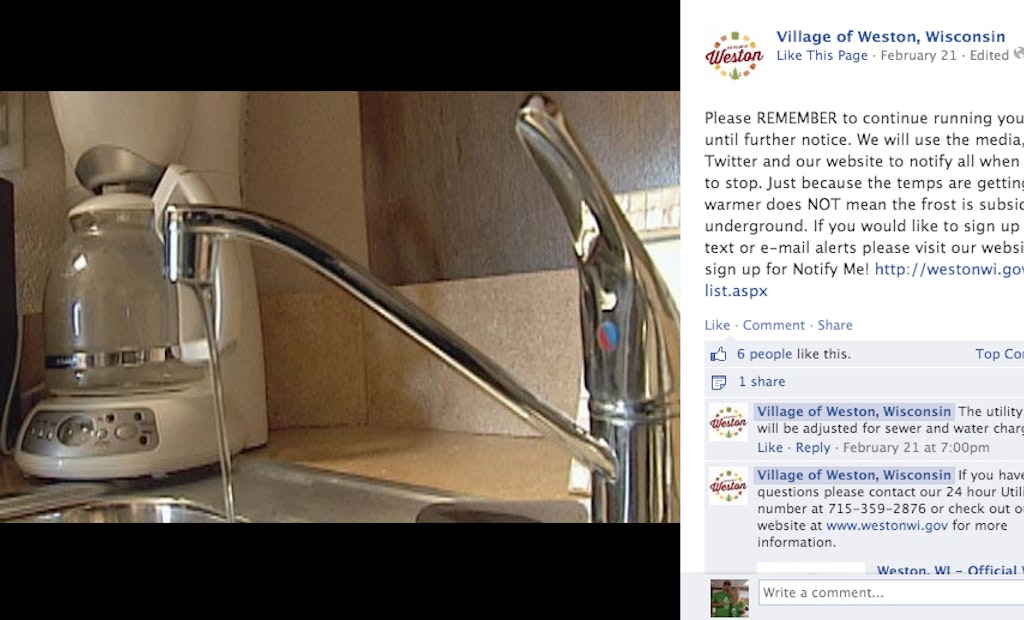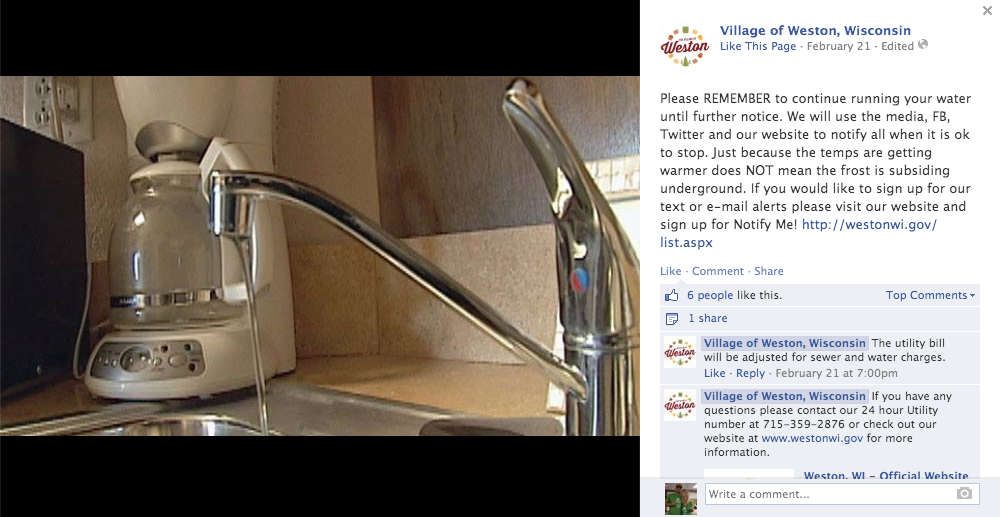
Interested in Education/Training?
Get Education/Training articles, news and videos right in your inbox! Sign up now.
Education/Training + Get AlertsCold, frost and frozen pipes are an annual occurrence in Wisconsin. But even in the land of the Frozen Tundra, this year’s severe winter has seen frost depths and freeze-ups reach unprecedented levels.
Meteorologist Justin Loew in Wausau, Wis., says the winter of 2014 ranks as one of the coldest all-time with more than 50 below-zero days, and on target to break the mark of 55 below-zero days set in the winter of 1916-1917, according to records dating to 1895. Loew says Northcentral Wisconsin already has experienced the second coldest winter on record and the second snowiest winter on record, but it’s the persistent cold that’s creating the greatest problem for municipalities across the region.
Frost levels are 6 to 8 feet deep in many areas. A typical winter is 4 to 5 feet. Penetrating frost has frozen laterals and prompted communitywide orders to run pencil-wide streams of water until further notice — in some cases mid-April and beyond.
Extreme measures
Joe Gehin, former public works director for the City of Wausau, says he can’t recall frost levels this deep in his 30 years on the job. “I was talking to an official at Wausau Water Works and they told me they had a frozen 10-inch water main down 8 feet,” he says. “It’s totally unprecedented.”
In the nearby village of Weston, which has a system-wide run order, water usage is at 1.8 and 2 mgd — twice the typical demand of 1 mgd, mirroring levels usually seen during the summer irrigation season. Weston, population 14,868, charges $2.30 per 1,000 gallons. The village also made a point of using every means possible to inform residents of the water crisis, from social media to a mass media press conference, Q-and-A handouts, a public education video, a village newsletter and direct mailings.

Keith Donner, the village’s public works director, says the run order is a tradeoff to depleting overtaxed manpower. Two teams of two, working 12- to 14-hour days — at one point 19 straight — from Feb. 3 through Feb. 16, were assigned the task of thawing laterals. By the third week of February, crews had responded to 120 calls — a typical winter is 12. Frozen laterals tend to remain intact, at least short term. The utility is responsible for thawing laterals from the main to the curb stop and box with customers responsible for the lateral from the box to the building. Customers are billed at the village’s at-cost rate of $150 an hour.
The typical thaw method is to connect a welder to the frozen pipe and adjacent service or fire hydrant and run current. Average thaw time is two to three hours. Non-metallic pipes and pipes where continuity has been lost take longer using hot water or steam.
“For example, yesterday it took a local plumbing contractor seven hours to thaw a 1-inch service line where we were unable to obtain continuity,” Donner says. “We also have spent the better part of a full day to thaw 90 feet of service with the hot water method.”
Making history
Since 1996, the most severe winter in the memory of the village’s utility clerk, 8.6 miles of asbestos cement pipe was replaced in areas that experienced annual freeze-ups. The village has approximately 109 total miles of main (67 percent ductile iron, 20 percent cast iron and 13 percent AC) serving 5,205 customers.
“We felt the 7-foot bury depth of the new ductile iron would be sufficient to avoid lateral freeze-ups in these areas, and this proved to be the case in normal winters,” Donner says. But not this year.
Burying pipe deeper than 7 feet is an option, but it comes at a price. “The general contractor I spoke to recently indicates for pipeline installation they can install 400 feet of pipe a day at 7 feet deep,” Donner says. “For every additional foot of depth they lose 50 feet per day of production. That is a 12.5 percent reduction for the first foot, and the cost would ramp up for each additional foot.” Using open trenching, the $65 installed cost for 7 to 7.5 feet of depth becomes $73 per foot for the next foot down.
The City of Rhinelander, approximately 60 miles to the north, has been on a system-wide run order since Feb. 4. During a typical winter, it costs the city from $30,000 to $50,000 to leave the water flow. This year, the city passed that mark in the first month, saying its 3,400 customers won’t be billed for the extra usage, but charged at an average seasonal rate.
In Green Bay and other communities in eastern Wisconsin, some residents are showering with their neighbor’s water, using a hose connected to a garden spigot next door. It’s a method not used in 20 years.
“We’re not going to see the whole impact of this until we start seeing the frost come out of the ground,” Donner says. “It’s one of those situations where you’re very much at the mercy of Mother Nature.”





